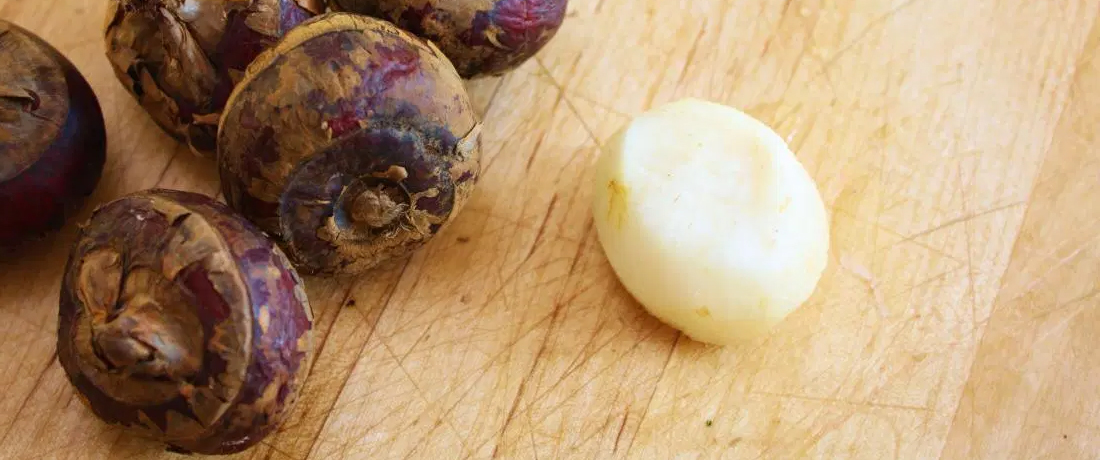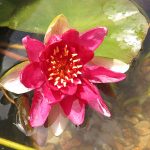
 Important note about plant availability. Important note about plant availability.There are hundreds of factsheets on our website provided for your information. Not all plants will be available at all times throughout the year. To confirm availability please call (03) 8850 3030 and ask for the nursery. |
An annual sedge growing in water margins and bogs with erect, narrow, tubular leaves half a metre to a metre tall. The plant spreads by a creeping rhizome which, through the summer months, produces additional sucker plants. The sweet corms have a crisp white flesh and a nutty flavour and are highly valued as a nutritious food. During canning, the medicinal tonic or antibiotic principle called puchine (or puchin) is destroyed, but fresh corms remain crisp and retain puchine after cooking. For this reason, Chinese people regard fresh water chestnuts as superior to the canned product. The flavour has been described as a blend between apple, chestnut and coconut. The flesh remains crisp even after cooking.
Plant in the early spring as 210 frost free days are needed to produce a crop. One chestnut (corm) can, under favourable conditions spread and fill a square metre, so allow sufficient space when planting, perhaps 3 plants per 2 square metres. Soil needs to be free of sharp sticks and stones which can damage the delicate skin of the chestnut. Once the stems are 20cm high the soil should be kept flooded with 100mm to 300mm of water throughout the growing period.
Later in autumn the leaves start to yellow and it is at this point that the chestnuts form at the terminal ends of the rhizomes. Over the following weeks the leaves die back totally and harvesting can start at this time. Although you may find that the sweetness of the chestnuts improves after a period of winter chill. Water is drained off prior to harvesting. Wash the corms after harvest, and brush when they are dry.
They can be grown in any sufficiently large container that holds water e.g. bathtubs, wading pools, ponds or Styrofoam boxes. Alternatively, you can grow them in a plastic lined trench in the vegetable garden.
Problems that commonly occur are rot and damage from birds. A total or almost total lost of seed corms due to rot can occur if they are introduced to a soil or medium that has been freshly fertilized with manure. This can be avoided by fertilising the field or container a few weeks early giving the manure time to break down first.


